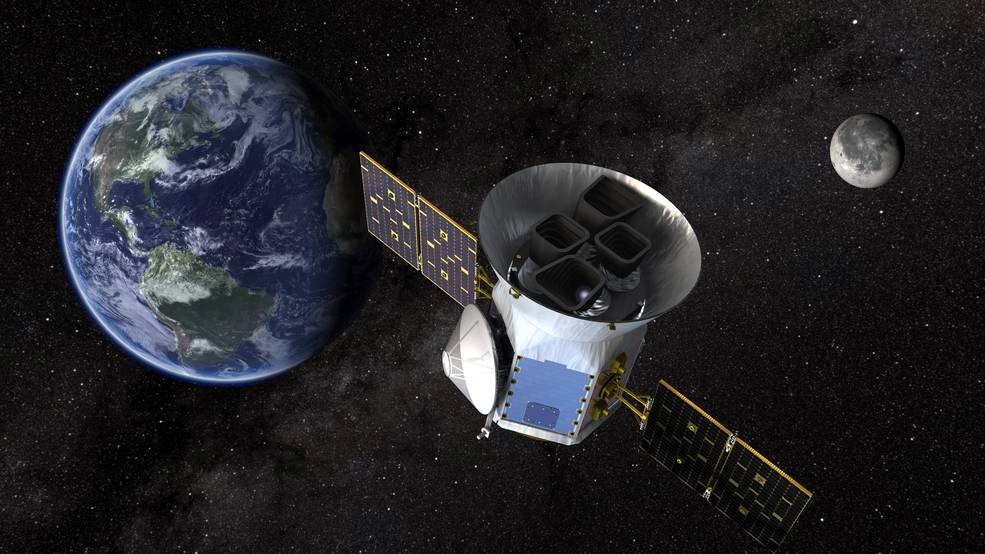Description

Disclaimer: Copyright infringement not intended.
Context
- The discovery of the low-density exoplanet TOI-1420 b by NASA's Transiting Exoplanet Survey Satellite (TESS) has provided valuable insights into the diversity of exoplanetary systems.
Details
Discovery of TOI-1420 b
- TOI-1420 b is a newly discovered exoplanet orbiting a distant star.
- It was identified by a team of astronomers led by Stephanie Yoshida of the Harvard-Smithsonian Center for Astrophysics (CfA) using TESS data.
Characteristics of TOI-1420 b
- TOI-1420 b is an exceptionally low-density exoplanet.
- It has a radius of approximately 11.89 times that of Earth and a mass of around 25.1 times that of Earth.
- The ultra-low density of TOI-1420 b is only 0.082 grams per cubic centimeter (g/cm³).
- It orbits its host star, a late G-dwarf star, at a distance of 0.07 astronomical units (AU) and has an equilibrium temperature of about 957 Kelvin (K).
Significance of Low Density
- TOI-1420 b is highlighted as the largest-known planet with a mass less than 50 times that of Earth.
- Its low density suggests the presence of a substantial envelope of hydrogen and helium gas.
- The planet's structure is estimated to consist of a core with a mass of approximately 4.0 Earth masses and a large envelope.
Future Prospects
- Low-density planets like TOI-1420 b offer promising opportunities for future atmospheric characterization and dynamical studies.
- They are more susceptible to atmospheric outflows compared to higher-gravity planets, making them valuable subjects for scientific investigation.
- Comparative planetology involving TOI-1420 b and similar exoplanets can provide insights into their formation and evolution processes.

About Transiting Exoplanet Survey Satellite (TESS)
Introduction to TESS
- TESS, the Transiting Exoplanet Survey Satellite, is a NASA space telescope launched on April 18, 2018, with the primary mission of searching for exoplanets orbiting the brightest stars in the sky.
- It represents a significant advancement in the field of exoplanet discovery, building on the success of previous missions like Kepler.
Objectives and Mission
- TESS's primary mission is to discover exoplanets using the transit method, which involves detecting the periodic dimming of a star's light when a planet passes in front of it.
- Unlike Kepler, which focused on a small patch of sky, TESS surveys nearly the entire sky, divided into 26 sectors, during its two-year primary mission.
Instrumentation and Capabilities
- TESS is equipped with four wide-field cameras, each with a 24 x 24-degree field of view, providing a wide coverage area for observing stars.
- It can monitor over 200,000 stars simultaneously, searching for the subtle brightness variations caused by exoplanet transits.
Discoveries and Contributions
- TESS has made numerous exoplanet discoveries, including a wide variety of planet sizes and types, ranging from Earth-sized rocky planets to gas giants.
- It has identified several exoplanets in the habitable zone, where conditions might be suitable for liquid water and potentially life.
Legacy and Impact
- TESS has significantly expanded our knowledge of exoplanets, both in terms of quantity and diversity.
- Its discoveries are instrumental in advancing the search for potentially habitable worlds beyond our solar system.

Conclusion
TESS is a remarkable space telescope with a broad mission to survey the sky for exoplanets. Its impact on the field of astronomy and our understanding of the universe's exoplanetary systems is profound. As TESS continues to operate and make new discoveries, it promises to uncover even more secrets about the diversity of exoplanets and their potential habitability.
|
PRACTICE QUESTION
Q. What is the primary mission of NASA's Transiting Exoplanet Survey Satellite (TESS)?
A) To study the atmospheres of exoplanets.
B) To search for gravitational waves.
C) To monitor the brightness of stars and search for transiting exoplanets.
D) To study the outer solar system.
Answer: C)
|










